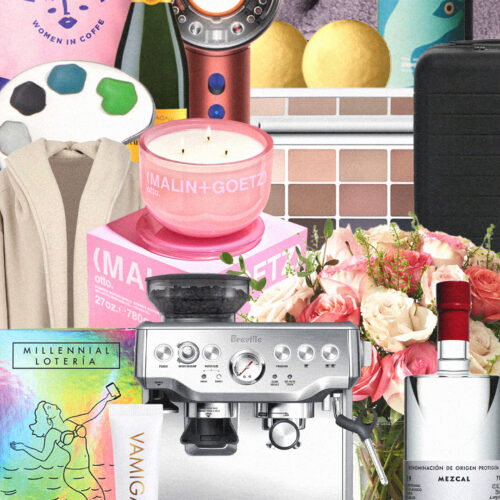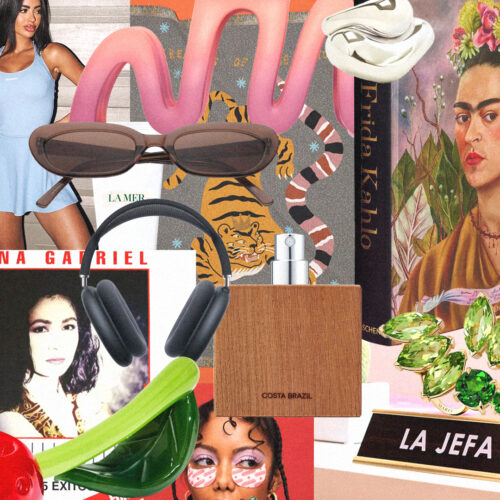New York-based makeup artist Marcelo Gutierrez ditched fine art school to push for diversity and visibility in front of the camera and behind the scenes. Gutierrez was born in Colombia and raised in the US after his family fled their home country and sought refuge in Florida. Throughout his youth, Gutierrez’s painter father and sculptor mother encouraged creative expression and drawing skills. After a stifling move to California to begin art school, the budding artist dropped out of school and moved to New York. On nights out in the city with his BIPOC and LGBTQ+ community, Gutierrez began to explore makeup and started to see it as a viable and fulfilling career.
Translating what he’s been taught as a fine artist into images that explore different facets of visual culture today, Gutierrez is fleshing out aesthetics that challenge euro-centric and homogenous constructs. After being tapped to create Tinashe’s makeup for New York Fashion Week 2017, his public profile began to take off. Since then, Gutierrez’s work has been shot by prominent photographers including Petra Collins and Renell Medrano and featured in publications such as Vogue and CR. Likewise, the scope of his creative output has evolved, inspiring collaborations with iconic faces of today including Alexa Demie, Troye Sivan, and Dev Hynes.
Latina Culture Editor Alissa Lopez Serfozo connected with Gutierrez to discuss creative process, beauty, and rage. This interview has been edited for clarity.
You’re an artist who produces across mediums. How does your makeup work influence your filmmaking?
My makeup doesn’t so much influence the concept of any of my film work or ideas for them. Nevertheless, my career in makeup definitely takes advantage of the visual tool to get certain feelings across. It makes for a stronger image.
Walk us through your creative process.
My creative process is pretty intuitive but has structure. Once I receive the creative direction for a shoot, I follow-up with the client with my own mood board of images based on their direction. I tailor the looks to their style, but always bring my interpretation into the project. If something seems dated, overdone, or cliché, I won’t do it. I’m constantly watching movies, going on long walks, looking through my books, and collecting images online to keep me open minded to new visions.
Are there any beauty stereotypes you like to challenge?
I’d like to think that I’m always challenging the euro-centric homogenous constructs we are forced to believe are the standard of beauty. I’m a very fluid person when it comes to beauty; I don’t really stick to many rules or expectations so inherently I’ll challenge the norm in that way.
You’ve lived in Florida and San Francisco and are now based in New York City – all places with significant Latinx populations. Are there any Latinx subcultures that you draw inspiration from?
I’ve always gathered most of my inspiration from the POC queer culture in every city I live. It’s where I feel most comfortable and confident socially. It’s where all the best people are.
In the US, the Latinx community is often perceived as a racial, socioeconomic, and cultural monolith. Which Latinx cliches are you tired of?
That’s a conversation that deserves a whole seminar or college course but I think that Hollywood and American pop-culture play a huge role in creating a monolithic view of the Latino community. It’s time for more diverse stories and characters. Latinx creators need to be given opportunities to create.
You attended art school before dropping out. Are there any skills you were taught in art school that you now implement? What about the skills that are self-taught?
I’m a self-taught makeup artist, painter, draftsman, writer and director. Art school gave me the tools to learn how to contextualize and properly flesh out my thoughts, while also constantly editing the idea to get it to its highest potential.
Let’s talk about your IG bio. What about Beauty & Rage?
It’s a duality that I personally live by and that seeps through my work. I live life to the fullest in order to feel and experience as much beauty as possible, and with that also comes the aggression, anguish and passion needed to reach both ends of light and dark. Both are necessary for capturing and creating the beauty I want to share with people.









